Her Majesty The Queen has commissioned aircraft carrier HMS Queen Elizabeth today in Portsmouth.
The name HMS Queen Elizabeth is a continuation of an historic Royal Navy name dating back over a century and the vessel herself is not named after the current monarch.
The warship is now in the hands of the Royal Navy. A spokeswoman from the ACA, the company who managed the build of the carrier, said:
“This is really fantastic day. It’s the culminates years of hard work and dedication of 10,000 people across the UK and wider supply chain.”
Speaking before the ceremony, Captain Kyd described the day as a major milestone.
“Building aircraft carriers is not for the fainthearted. There are very few countries who can do this around the world. So we should look at our British industry, our designers, all the skills, all the production companies around the country, the shipyards from Devon through to Fife, to the Royal Navy, who have come together to make this happen.
We should be really proud as a country. This has been a national endeavour. It has just been fantastic – it is really a culmination of all our hard work.”
Defence Secretary Gavin Williamson said:
“Today marks the start of a hugely significant chapter for the Royal Navy, and indeed the nation, as the future flagship is commissioned into Her Majesty’s fleet. It is an honour to witness the crowning moment of an extraordinarily busy year for the Royal Navy that has seen us name the second carrier, HMS Prince of Wales, cut steel on the first Type 26 frigates and launch the National Shipbuilding Strategy.
Our new aircraft carrier is the epitome of British design and dexterity, at the core of our efforts to build an Armed Forces fit for the future. For the next half a century both carriers will advance our interests around the globe, providing the most visible symbol of our intent and commitment to protect the UK from intensifying threats, wherever they may come from.”
The name HMS Queen Elizabeth is a continuation of an historic Royal Navy name dating back over a century and the vessel herself is not named after the current monarch.
Possibly the best commissioning cake ever seen! #QNLZcommissioning https://t.co/aiW56WShvg pic.twitter.com/0WW9mLbNlp
— HMS Queen Elizabeth (@HMSQnlz) December 7, 2017
The origins of the massive and sometimes controversial Queen Elizabeth class carrier programme lie in the 1998 Strategic Defence Review.
The review re-evaluated every weapon system (active or in procurement) with the exception of the Eurofighter Typhoon and the Vanguard-class ballistic missile submarines.
The report identified that aircraft carriers offered the following:
- Ability to operate offensive aircraft abroad when foreign basing may be denied.
- All required space and infrastructure; where foreign bases are available they are not always available early in a conflict and infrastructure is often lacking.
- A coercive and deterrent effect when deployed to a trouble spot.
The report concluded:
“The emphasis is now on increased offensive air power, and an ability to operate the largest possible range of aircraft in the widest possible range of roles. When the current carrier force reaches the end of its planned life, we plan to replace it with two larger vessels.”
In November 2004, while giving evidence to the House of Commons Defence Committee, First Sea Lord Admiral Sir Alan West explained that the sortie rate and interoperability with the United States Navy were factors in deciding on the size of the carriers and the composition of the carriers’ air-wings:
“The reason that we have arrived at what we have arrived at is because to do the initial strike package, that deep strike package, we have done really quite detailed calculations and we have come out with the figure of 36 joint strike fighters, and that is what has driven the size of it, and that is to be able to deliver the weight of effort that you need for these operations that we are planning in the future.”
What’s next for the vessel?
The next phase between 2017 and 2020 will be critical to establishing carrier strike capability. The MoD must bring together the carriers, Lightning jets, and Crowsnest with trained crews and supporting infrastructure, logistics, communications and surveillance capabilities.
In early 2018, it is expected that the ship will head to the North Atlantic for heavy weather trials and helicopter certification operations where she will work up her helicopters. In Autumn 2018, HMS Queen Elizabeth will sail for the United States where flight trials with the F-35 will begin.
It is essential to test and operate all these elements together in preparation for Initial Operating Capability for Carrier Strike in 2020 followed by her first operational deployment in 2021. She will reach full operating capability for carrier strike in 2023.
Captain Jerry Kyd, commander of HMS Queen Elizabeth, commented on the initial deployment and the gradual increase in air wing numbers:
“We’re constrained by the F-35 buy-rate even though that was accelerated in SDSR in 2015, so initial operating capability numbers in 2020 are going to be very modest indeed. We will flesh it out with helicopters, and a lot depends on how many USMC F-35s come on our first deployment in 2021. But by 2023, we are committed to 24 UK jets onboard, and after that it’s too far away to say.”
Around 2023, the Ministry of Defence have indicated that the UK will have 42 F-35 aircraft with 24 being ‘front-line fighters’ and the remaining 18 will be used for training (at least 5 on the OCU), be in reserve or in maintenance.
For a detailed breakdown of when things will be happening with each ship and the aircraft squadrons involved, we suggest savetheroyalnavy.org and their ‘Carrier Strike Timeline‘.
The Key Numbers:
- The project to build HMS Queen Elizabeth and sister ship HMS Prince of Wales cost more than £6 billion.
- The aircraft carrier weighs 70,600 tonnes and has a top speed of 25 knots (this however has been exceeded frequently).
- Its flight deck is 280 metres long and 70 metres wide – enough space for three football pitches.
- The ship is the second in the Royal Navy to be named Queen Elizabeth.
- The ship will have a crew of around 700, increasing to 1,600 when a full complement of F-35 jets and Crowsnest helicopters are embarked.
- There are 364,000 metres of pipes inside the ship.
- Both HMS Queen Elizabeth and HMS Prince of Wales will keep 45 days’ worth of food in its stores.
- The entire Ship’s Company of 700 can be served a meal within 90 minutes – 45 minutes when at action station.
- Leaving the Rosyth dock was among the most difficult manoeuvres in the sea trials, with just 50cm between the bottom of the ship and the seabed in the port.


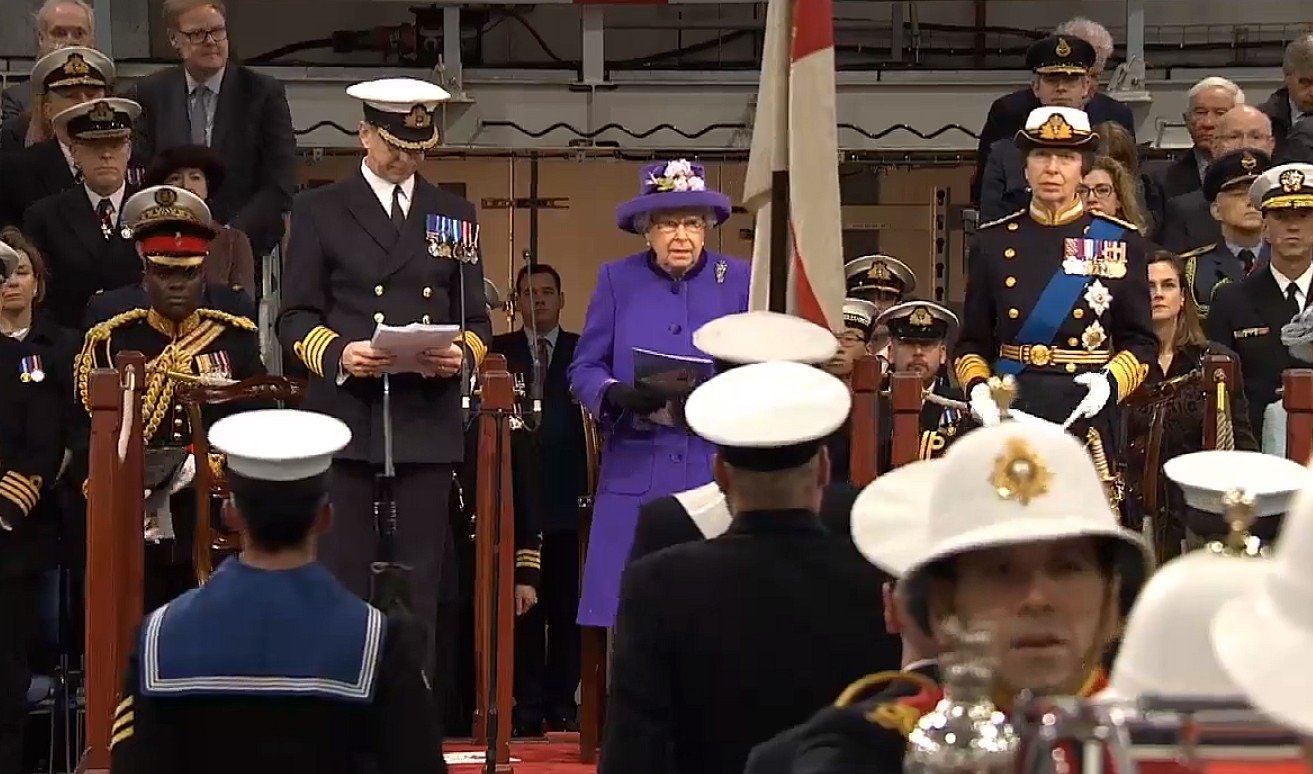
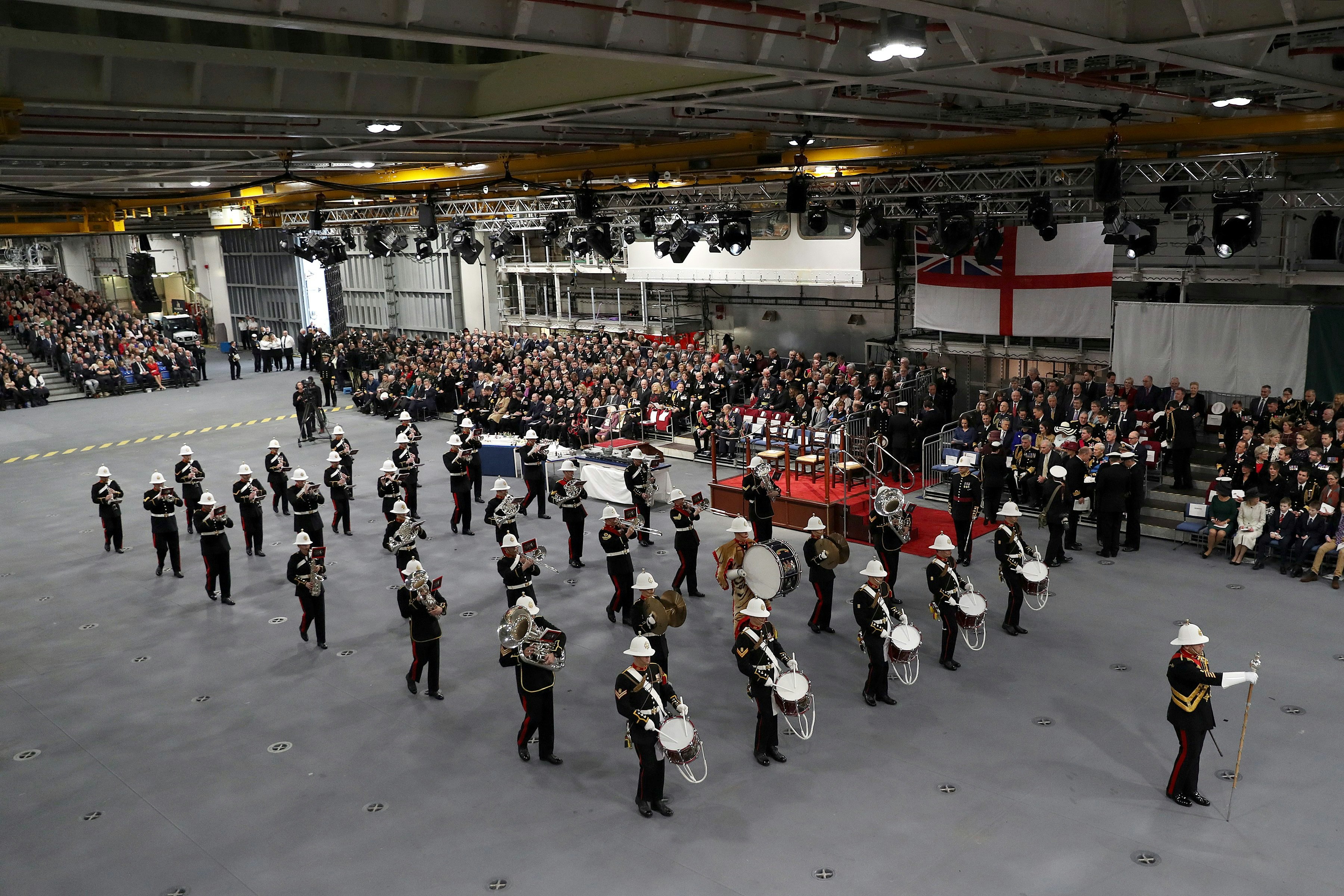



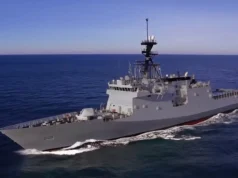
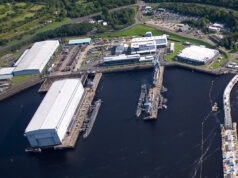
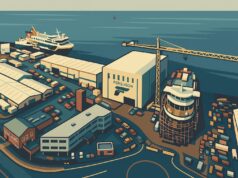
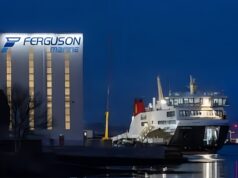
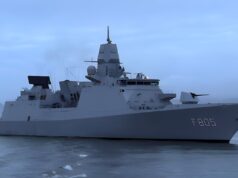
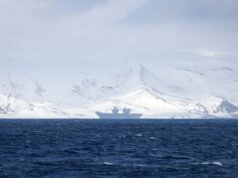
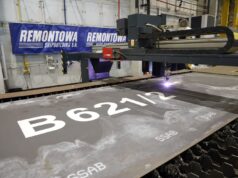
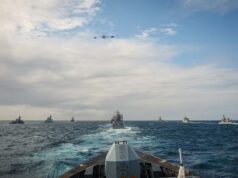

Great day!… a long time coming.
So proud of all HM forces, current and veterans, and vessels such as this which the UK can accomplish.
Looking forward to the successful completion of her work up and flight trials.
Outstanding engineering achievement. This is the ship,along with her sister, which will put the Royal Navy back in the top tier of world navies. Ain’t that many with carriers these days.
God Save The Queen.
Agree.
Yet apparently the UK military is a “laughing stock”
The world’s most expensive cocktail bar is open for business.
Probably second only to the American’s and even then not in every respect.
We are getting much better as a nation at rediscovering our engineering prowess – everyone should be very proud.
Come on Gavin, let’s use this to get defence on the front foot again.
I’m impressed by the ship but I think she got upstaged at her own party – that is one hell of an impressive cake!
Seriously though, congratulations to all involved, from design through build and sea trials to where we are now. Probably (say it softly) even thanks to a select few politicians over the last decade or so who fought for the project in the first place and others who very possibly behind closed doors fought to protect the project against forces that would have had it cancelled or scaled back at various points in its history; some politicians fight the good fight on certain occasions.
And congratulations to those cake makers too. My only complaint is that it’s a bit of a shame they didn’t put a couple of V-22s on the deck, with RAF markings of course, just to wind people up.
That amazing cake will be the only time we both have it and eat it
Well done all – It’s certainly an impressive ship and engineering marvel as far as I am concerned.
Now for a bit more commitment from our government – god only knows we need some investment post Brexit.
Captain Kydd’s words about what pride actually is should be etched into hard steel and placed in every school, workshop, design office, boardroom, University and the Foyer of the MoD so people understand that pride is NOT something of which to be ashamed as our Politically Correct idiots would have us obey. That it has been hijacked like so much else into its current narrow meaning is despicable.
Belief in country is something to share and promote and engender that Pride and not be hidden under the noise of shouted abuse from those who have no self respect so fail to understand what respect and therefore pride actually is.
And yes I do mean the lunatic Left, the liberal do gooders who are the most illiberal and intolerant, by name one Jeremy Corbyn and his Momentum morons …
Well done Captain, God Bless you, this ship and the fantastic crew of men and women for whom you are solely responsible. You bear a huge weight on your shoulders. But you carry it well Sir!
I share the feeling. Pride and patriotism is constantly undermined by PC in this country.
Example – Trump re tweets views of a right wing group, world in meltdown.
Example – Muslim UK nationals leave to go to join ISIS, in effect fighting for a foreign power, a power that is against the west – us. This is treason.
They are ALLOWED to return here, given a council house, etc.
Where is the outrage? Where?
Two sets of rules, with the PC poison at its very core.
The national flag should be in every school and outside every house, and the history of our nation taught in schools. I’m so envious of the USA for this, the pride they have, openly.
But oh no we cannot do that we might offend.
OK I should know the answer but I don’t. What rank and nationality was the lady in blue at the head of the second from last contingent to march off at the end of the ceremony? I am guessing American?
Great and proud day for the Royal Navy and our Country.. Have to say it’s nice to look at the current list of RN ships and see a 70,600 tonne carrier followed by a helicopter carrier and 2 LPD’s. We can enjoy those details for a few months anyway but still hoping in the end we will keep the LPD’s.
But anyway great to see such a fantastic ship and congratulations to all involved in building such a impressive multi-role ship.
I heard that the Royal Navy is planning to Reactivate 809th Squadron “Immortals” in 2023. And equip them with F-35B’s…
The QE is a fantastic ship and a credit to all those who fought to keep the project going. The moaners and trolls are still out there but will soon sink into oblivion. The time has also come for our new Defence Secretary to fight tooth and nail against the likes of Hammond, keep our LPD,s and if not OCEAN, design and build a replacement and keep the Marines strength up. Our country cannot afford NOT to keep these capabilities.
n December 13, 2017 at 16:34
Good Evening!
No replacement for HMS Ocean? Completely incompetent. It seems HMG have and are willing to ignore the dangers east! Russia’s military investment should be matched! 2% is far from acceptable ! Wake up before it’s to late!
The Cold War has returned! Pick up your buried heads from the sand and react!
Nick